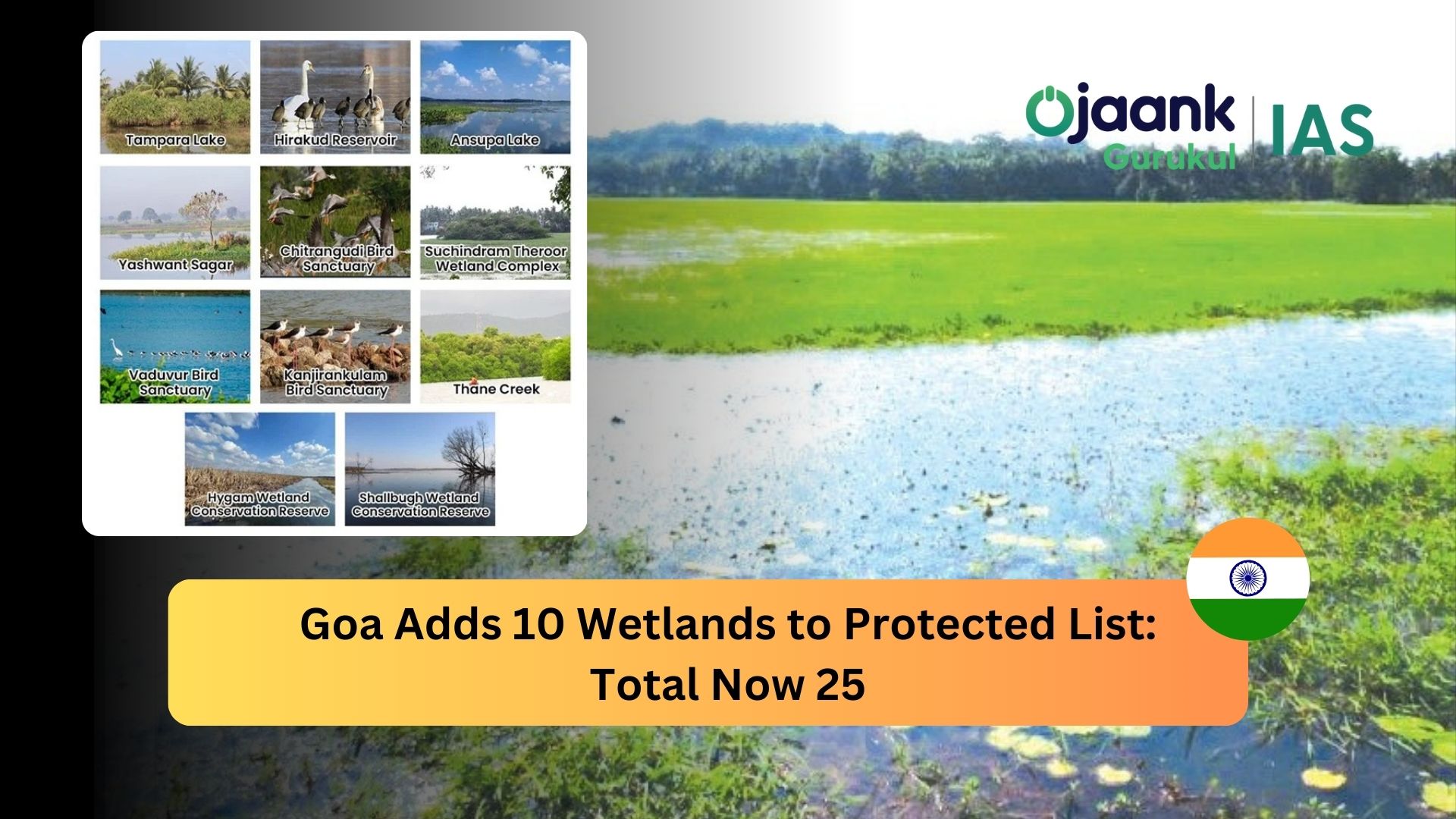Goa Adds 10 Wetlands to Protected List: Total Now 25

Introduction
In a significant environmental milestone, the state of Goa has added 10 more waterbodies to its list of notified wetlands, bringing the total to 25.
This move, under the Wetlands (Conservation and Management) Rules, 2017, reflects a commitment to conserving critical ecosystems. The wetlands serve as vital hubs for biodiversity and provide essential ecosystem services for the local population.
Newly Notified Wetlands in Goa
The latest additions to Goa's list of wetlands include:
- Parra Lake - Bardez
- Panchami Lake - Ponda
- Karmale Lake (Arla Keri Tollem) - Ponda
- Betal Lake - Querim, Ponda
- Kolamwada Lake - Karapur, Bicholim
- Kodal Lake - Karapur, Bicholim
- Macasana Lake - Salcete
- Sapu Lake (Tollem Bandar) - Ambelim, Salcete
- Bandolem Lake - Sancoale, Mormugao
- Talaulim Lake (Talsal Tollem) - Ponda
Why These Waterbodies Matter
Wetlands play a crucial role in maintaining ecological balance. These newly notified wetlands are essential for:
- Biodiversity Conservation: Supporting a variety of flora and fauna, including migratory birds.
- Ecosystem Services: Acting as natural water reservoirs, aiding irrigation, and replenishing groundwater.
- Cultural Heritage: Historically serving as temple tanks and sacred conservation sites.
Regulations Around Notified Wetlands
The Wetlands (Conservation and Management) Rules, 2017, establish stringent guidelines to protect these ecosystems. Key regulations include:
-
Prohibited Activities:
- Conversion for non-wetland use.
- Industrial setups or expansion of existing industries.
- Disposal of construction or solid waste.
- Discharge of untreated waste.
-
Regulated Activities:
- Developmental activities within the wetland's zone of influence.
- Construction of boat jetties (where necessary).
-
Permitted Activities:
- Traditional fishing practices.
- Water usage by locals when needed.
The Goa State Wetland Authority and the Union Ministry of Environment, Forest and Climate Change will monitor these areas to ensure compliance with the conservation rules.
Historical Significance of Goa’s Wetlands
Goa's wetlands have historical roots as agricultural tanks for rainwater harvesting, ensuring irrigation post-monsoon. Many were constructed within temple premises, promoting sacred water conservation. These initiatives have contributed to Goa's rich ecological and cultural tapestry.
Conclusion
The notification of 10 additional wetlands is a commendable step towards safeguarding Goa’s natural heritage. By prioritizing conservation, the state not only preserves biodiversity but also ensures the long-term welfare of its communities.
Read More:
How India’s Postal Services Evolved: From Pigeons to Modern Mail
Career Catfishing Explained: Why Gen Z Is Ghosting Employers
Goa Adds 10 Wetlands to Protected List: Total Now 25
Carbon Dioxide Emissions to Reach 429.6 ppm in 2025 | Climate Impact Analysis